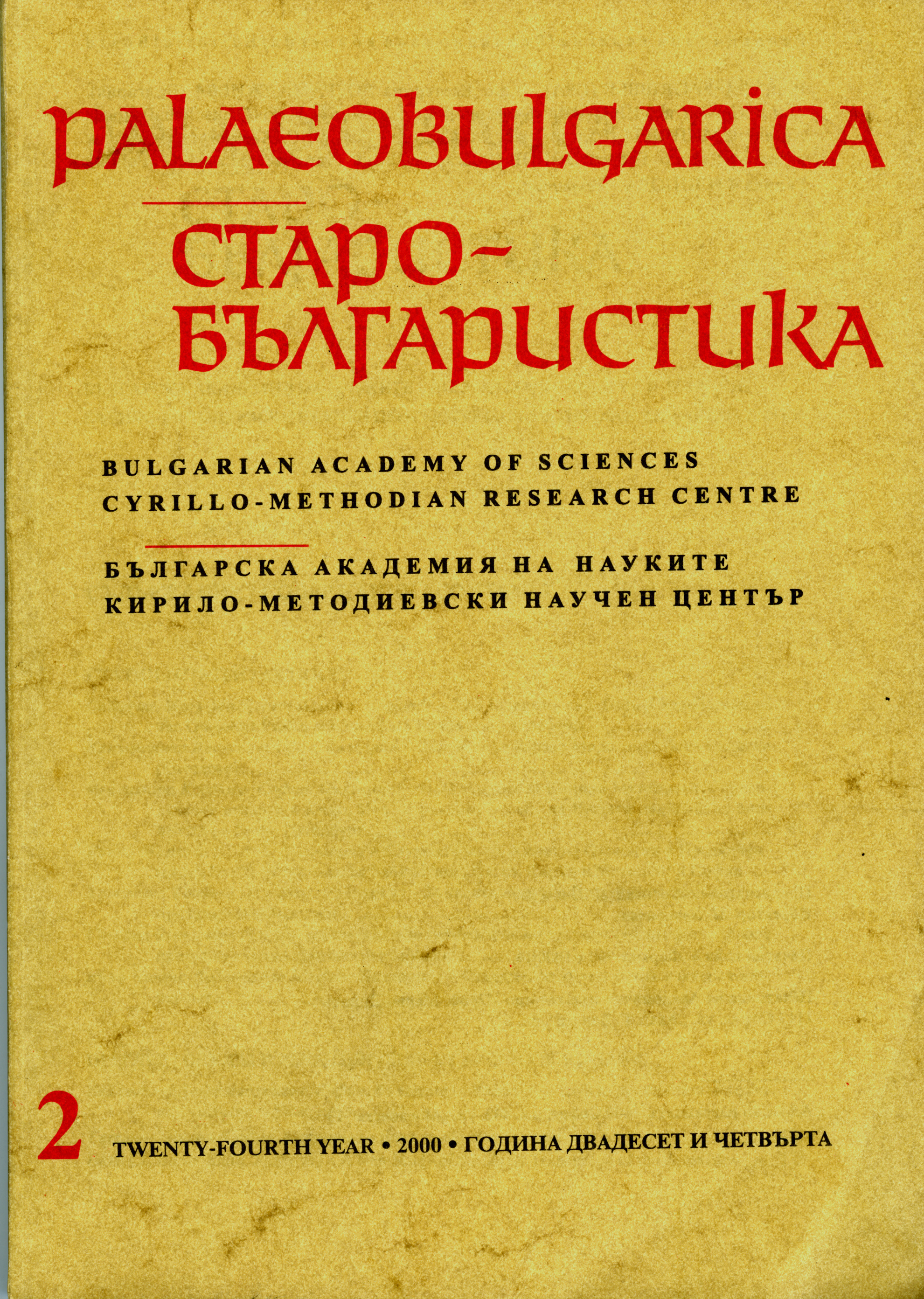За типологическите успоредици на фигуралните приписки в средновековните ръкописи
The typological Parallels of the Figural Marginal Notes in the Mediaeval Manuscripts
Author(s): Stefan SmyadovskiSubject(s): Language and Literature Studies
Published by: Кирило-Методиевски научен център при Българска академия на науките
Summary/Abstract: There are Slavonic manuscripts in which the main text ends in a peculiar way, the closing words are not levelled as is customary but form some figure in the spirit of Christian symbolism: a cross, triangle, circle, etc. It is believed that this manner of particular ornamentation came under Byzantine influence. These two phenomena, consequently, had a common forefather who should be sought considerably more far back in the past. The peculiar approach to the treatment of these texts, their forced insertion in a literally fixed framework can be linked to the so-called vers figures, Figurengedichte, carmina figurata. One of the first poets who used this iconic method was Simmias of Rhodes (Σιμμίας, Σιμίας; 300 B.C.). The ideogram lyrics reached their peak during the Carolingian Renaissance. Forgotten for a long time, they were revived in the Baroque literature, lived a true flourishing in Italian poetry at the beginning of the 20th century but their name was usually associated with the author of “Calligrammes” Guillaume Apolinaire.
Journal: PALAEOBULGARICA / СТАРОБЪЛГАРИСТИКА
- Issue Year: 2000
- Issue No: 2
- Page Range: 92-96
- Page Count: 5
- Language: Bulgarian
- Content File-PDF

